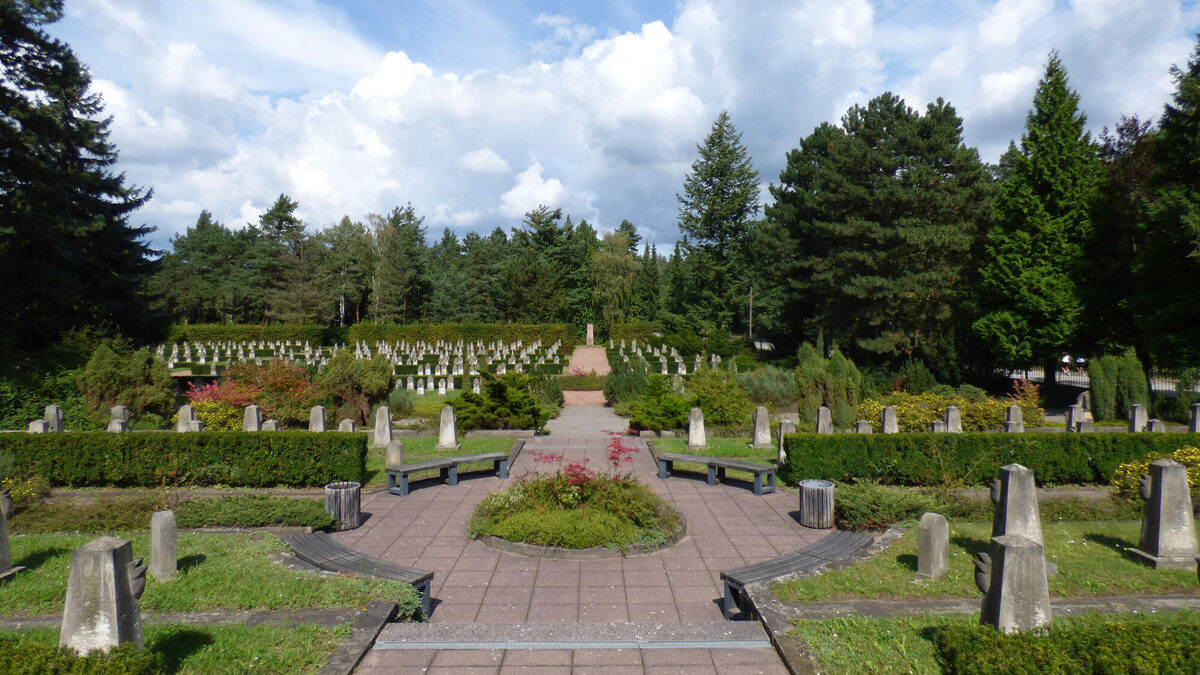|
Landeshauptstadt Dresden - www.dresden.de https://www.dresden.de/en/living/environment/07/Soviet-Garrison-Cemetery.php 25.03.2021 10:53:54 Uhr 07.04.2025 17:52:30 Uhr |
|
Soviet Garrison Cemetery
Brief description
The Soviet Garrison Cemetery is located on Marienallee in the district of Albertstadt on the south-western edge of the Dresden Heath.
There are 2,268 graves spread across an area of around 1.7 hectares (source: Saxon Memorial Foundation dedicated to the memory of the victims of political dictatorship in Dresden).
The Soviet Garrison Cemetery is recognised as a war cemetery under the German Graves Act. Since 2010, the whole grounds have been protected as a listed area to preserve the local history, structures and gardens.
It is an important European memorial for the time spanning the post-war period until the withdrawal of the 1st Guards Tank Army stationed in Dresden in the summer of 1992.
No more funerals are held at the cemetery.
More details
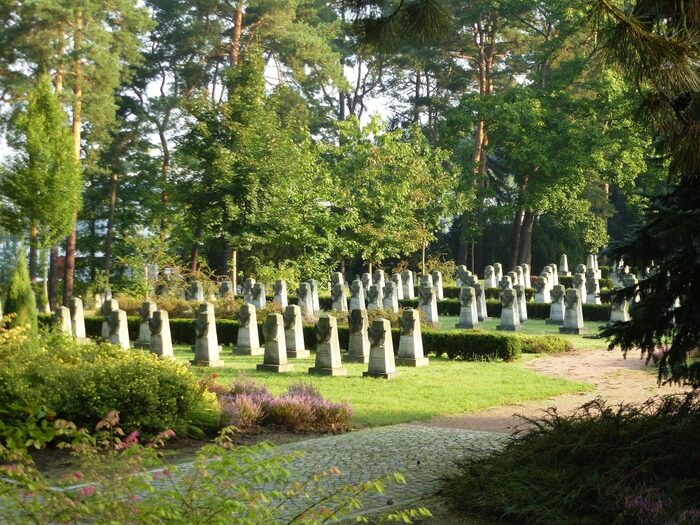
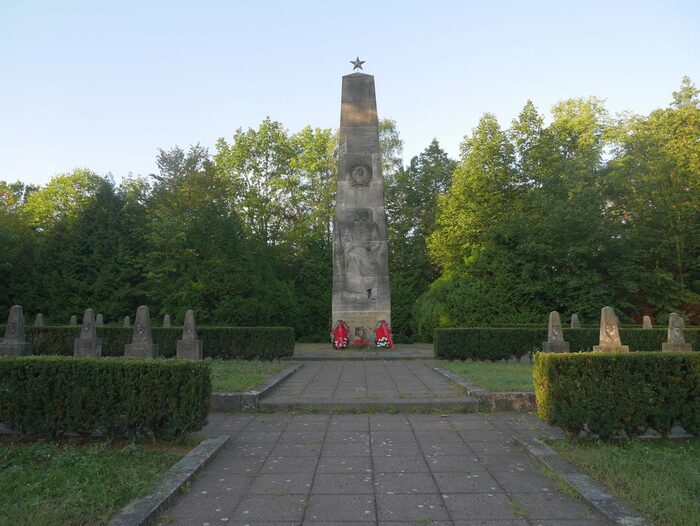
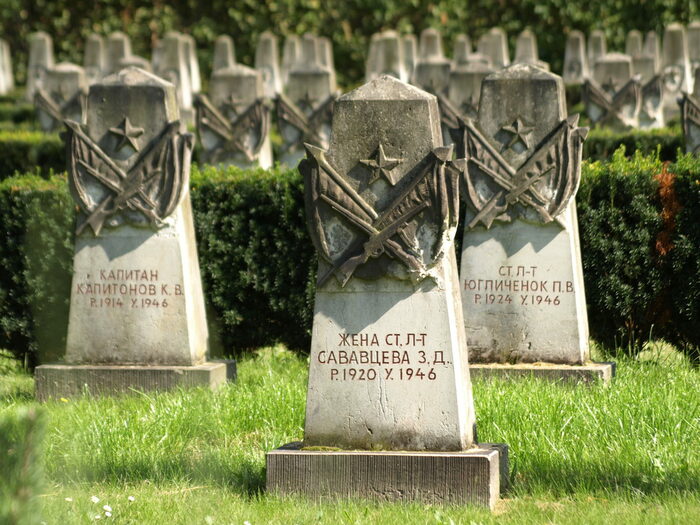
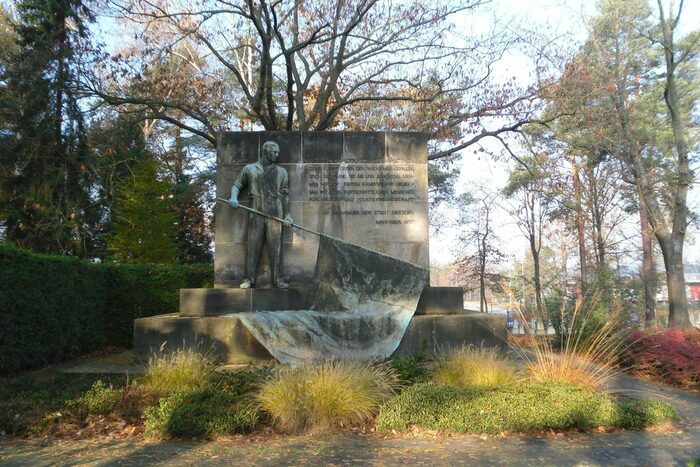
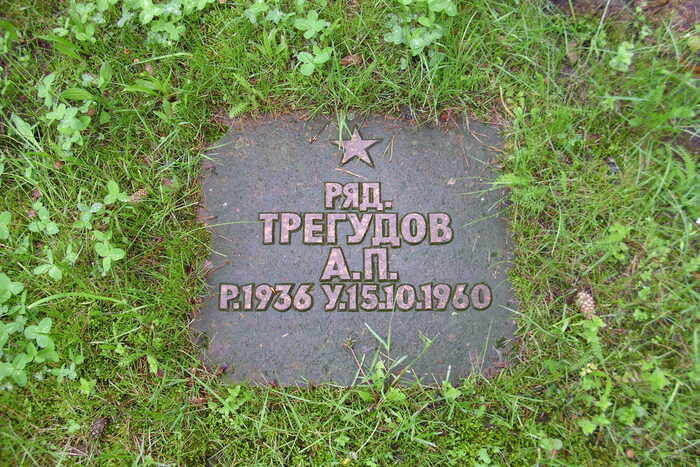
The Soviet Garrison Cemetery was originally opened in May 1945 as a simple forest cemetery for the soldiers and officers of the Red Army who had died of wounds, illnesses and privations.
When Order No. 117 was issued on 15 April 1946, the Soviet Military Administration decreed that military cemeteries were to be opened for the Red Army. The land around Marienallee was chosen as the cemetery site and the City Administration of Dresden was commissioned to develop the location into a cemetery of honour and tend to the grounds. The landscape gardening was naturally arranged by the City Garden Office under the leadership of garden architects Duglore Goldtammer and Karl Girt. The work was completed in 1955.
The 16-metre obelisk in the oldest part of the cemetery is a symbolic figure that was created by the city’s Design Office in cooperation with the architect Emil Leibold and the sculptor and painter Friedrich Press, who is actually known for his church works.
There is a separate section with its own memorial obelisk in the middle of the cemetery, where the graves of women, young people and children can be found. Another memorial stone commemorates Soviet prisoners of war and forced labourers who were reburied here from other cemeteries in the city.
The “Standard-Bearer” monument at the end of the main aisle opposite the entrance gate, created by Johannes Friedrich Rogge, was a gift from the City of Dresden to mark the 40th anniversary of the Great October Socialist Revolution in 1957.
The Soviet Garrison Cemetery underwent its first major reconstruction and redesign in the 1970s to cut down on the huge maintenance costs. The grave borders and sandstone plinths were significantly reduced in size and the seasonal plants were removed in the main section of the cemetery.
In the last section of the extension, which is mainly home to civilian graves, all the memorial stones in the style of the main grounds were removed and mostly replaced by slabs made of highly resistant quartz-porphyry from the town of Löbejun. At the request of the Soviet Garrison Headquarters, none of the graves were anonymised and the new memorial stones were largely placed above the original grave in keeping with the careful landscaping of the grounds.
During the last major overhaul of the cemetery grounds from 1998 to 2007, all remaining grave structures were removed from the main section to leave only the obelisk-like tombs, which are surrounded by grass.
In line with the plans to redesign the extended section of the cemetery, which have since been discarded, the people of Dresden collaborated with the German-Russian Cultural Institute and the Denk Mal Fort! Association to care for all graves in the cemetery, including various grave slabs with loving inscriptions in Cyrillic, to preserve the memorial site as authentically as possible. The extended part of the cemetery was ultimately granted recognition as a protected monument. This collaborative initiative put the Soviet Garrison Cemetery and the cultural debate surrounding liberation and occupation in the focus of Dresden’s society.
Until 1987, the Soviet Garrison Cemetery served as a burial site for soldiers and officers of the Red Army who had died during the occupation, as well as their family members and civilian army employees.
Ownership:
- 1946 to 1996: City of Dresden
- 1996 to 2019: Free State of Saxony, Saxon Real Estate and Construction Management (SIB)
- Since May 2019: State Capital of Dresden
Cemetery maintenance
If you would like to visit the Soviet Garrison Cemetery:
- Address: Marienallee, D-01099 Dresden (District of Albertstadt)
- Public transport:
- Tram (7 & 8); stop: Stauffenbergallee
- Bus (64); stop: Marienallee
- It takes around 10-15 minutes to walk from the Marienallee stop
- Opening hours: The cemetery is always open to visitors.
- Guided tours: available on request (contact: stadtgruen-und-abfallwirtschaft@dresden.de)
For specific questions, especially in Russian…
… please contact the Deutsch-Russisches Kulturinstitut Dresden e. V.
